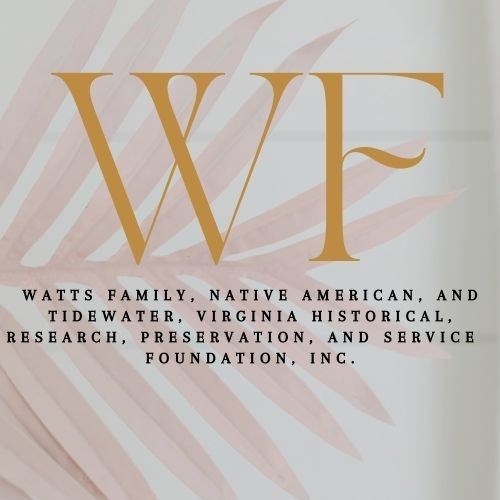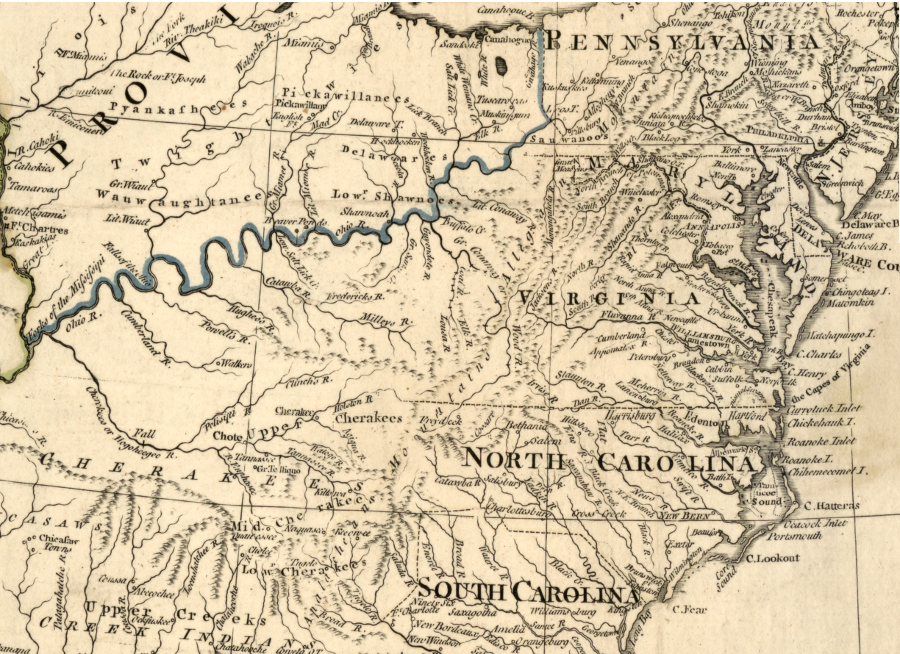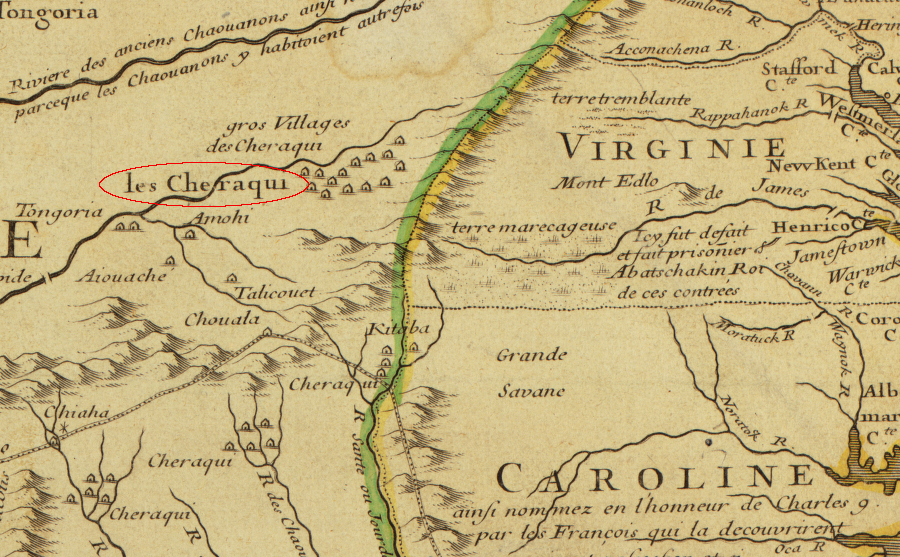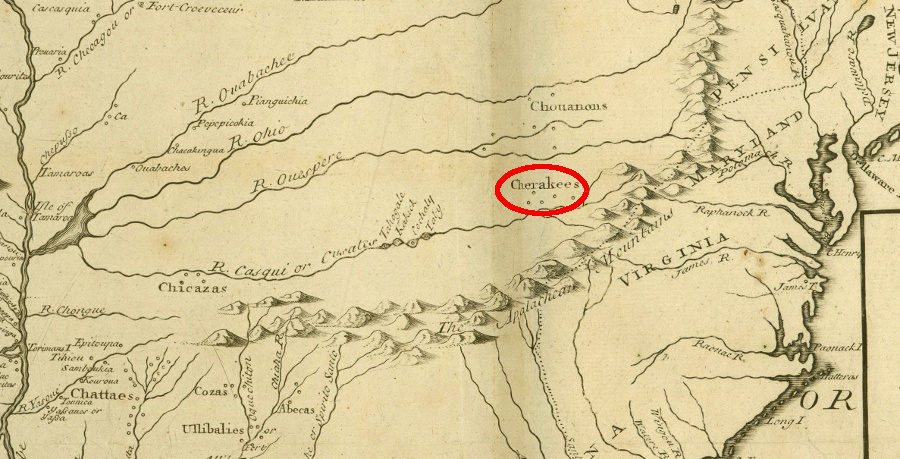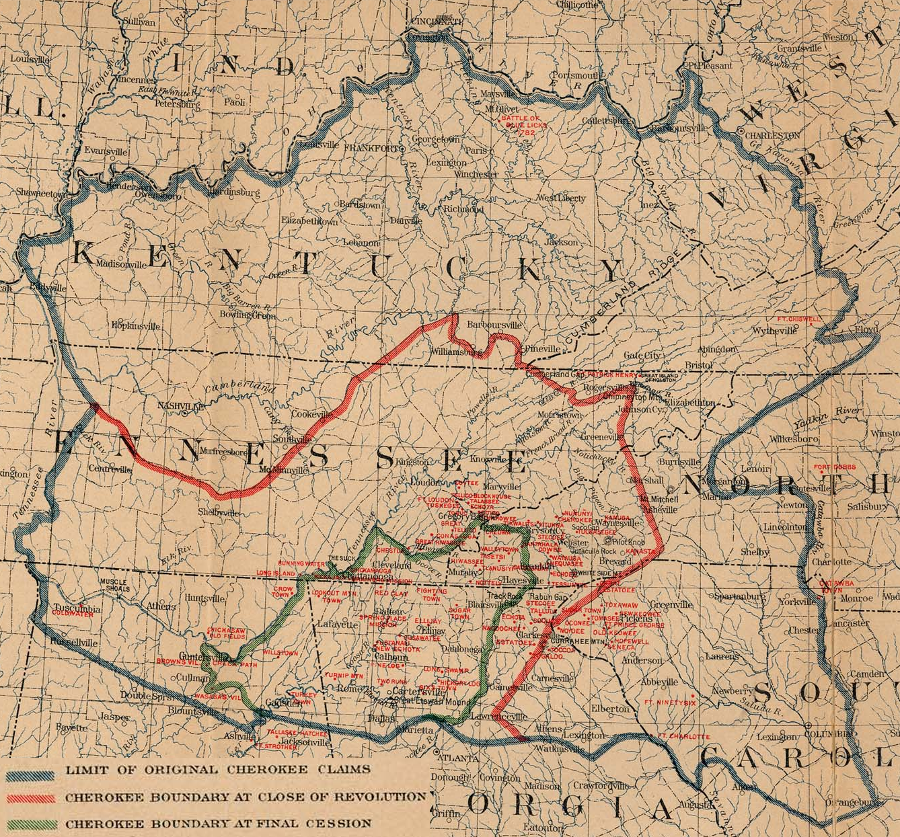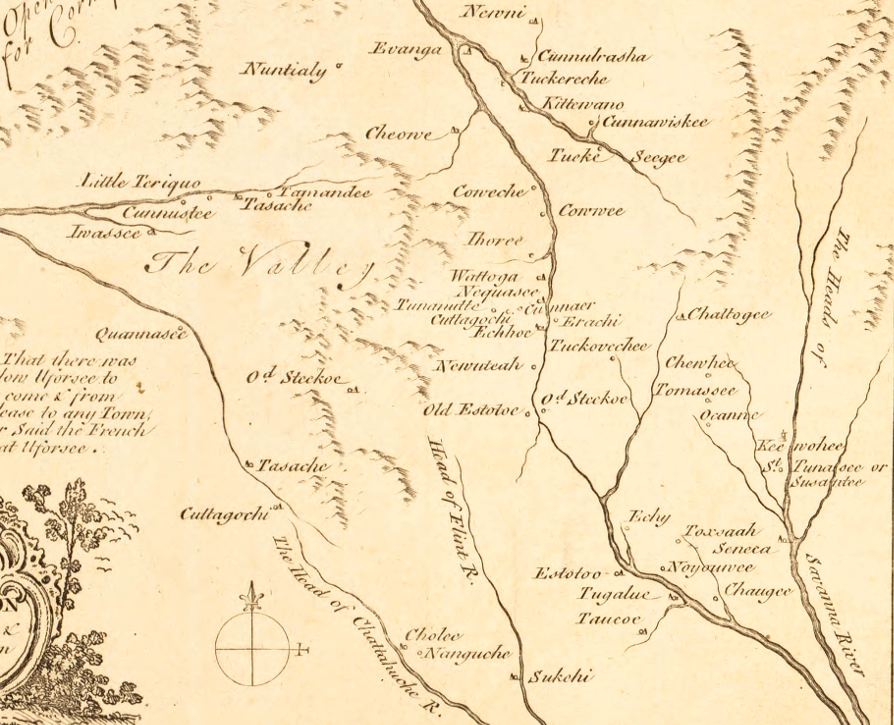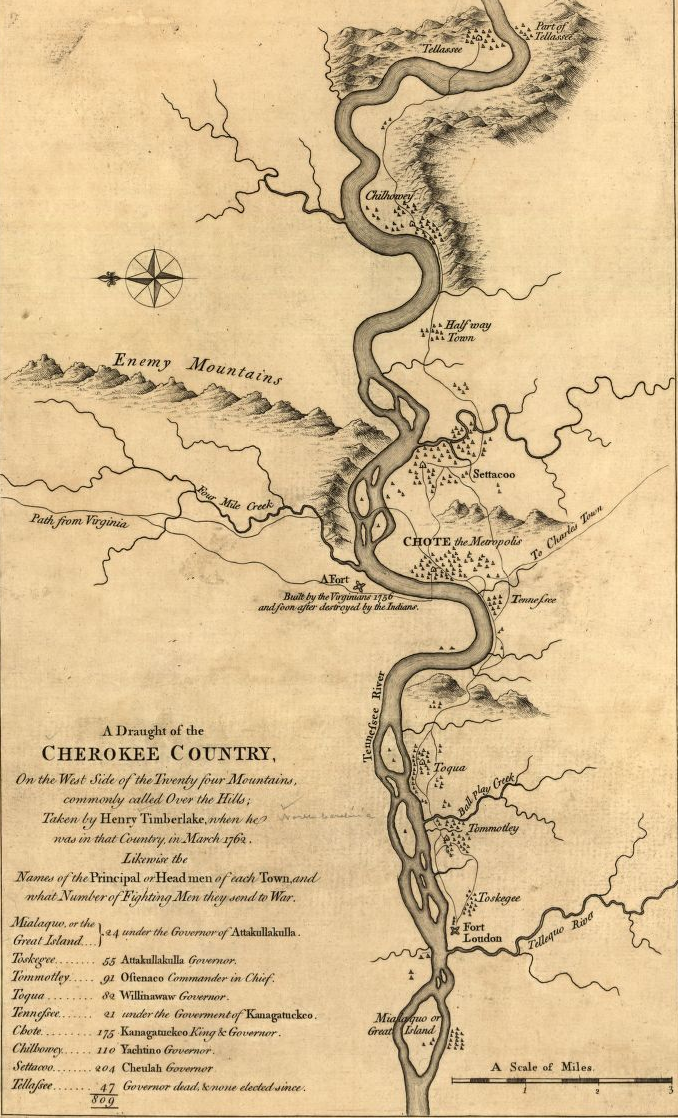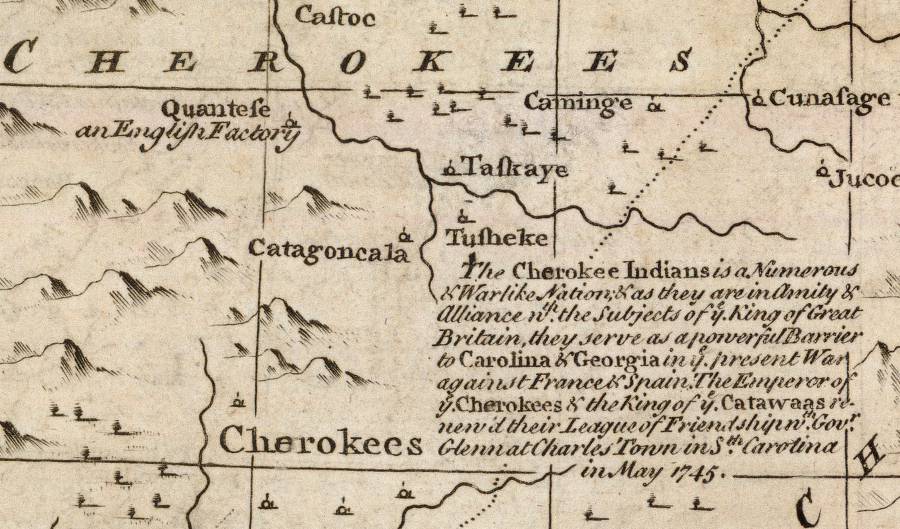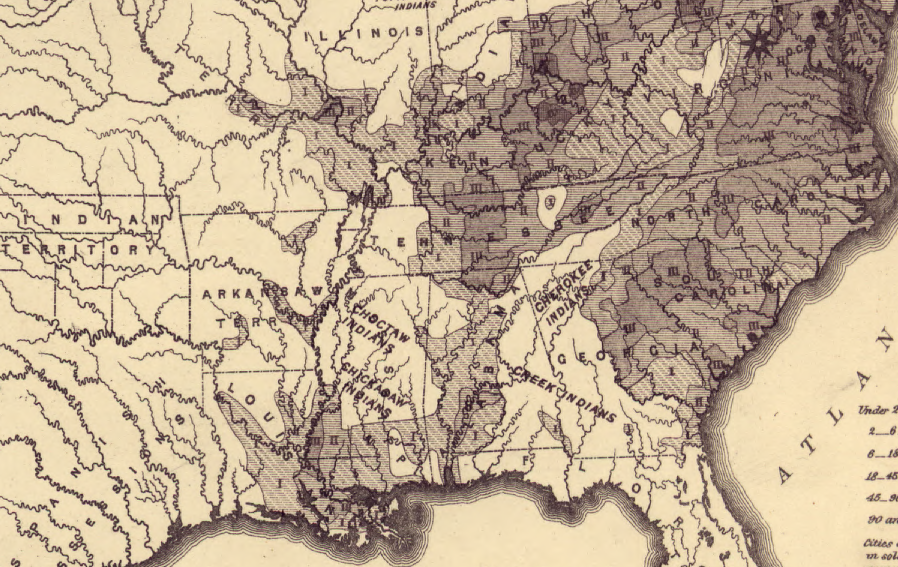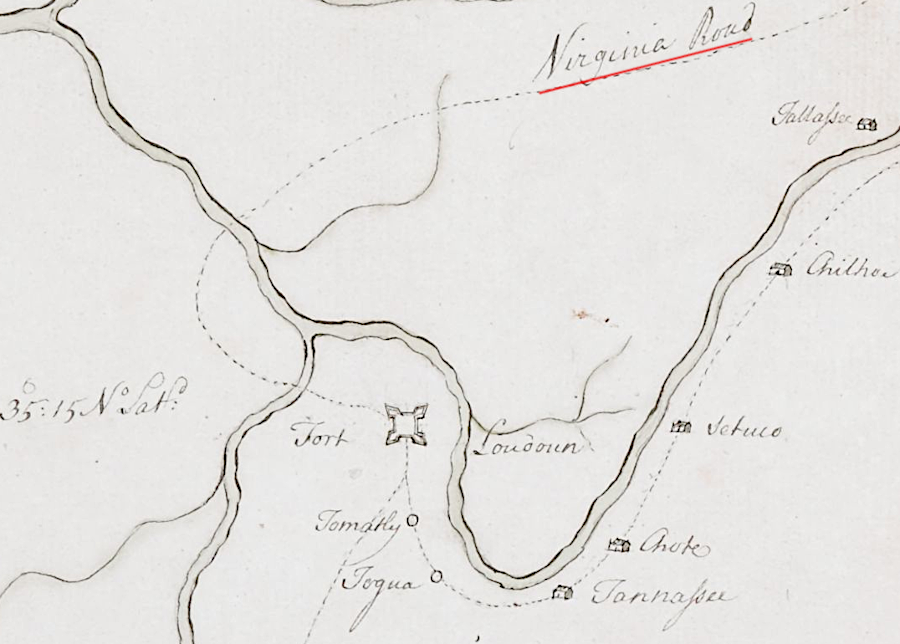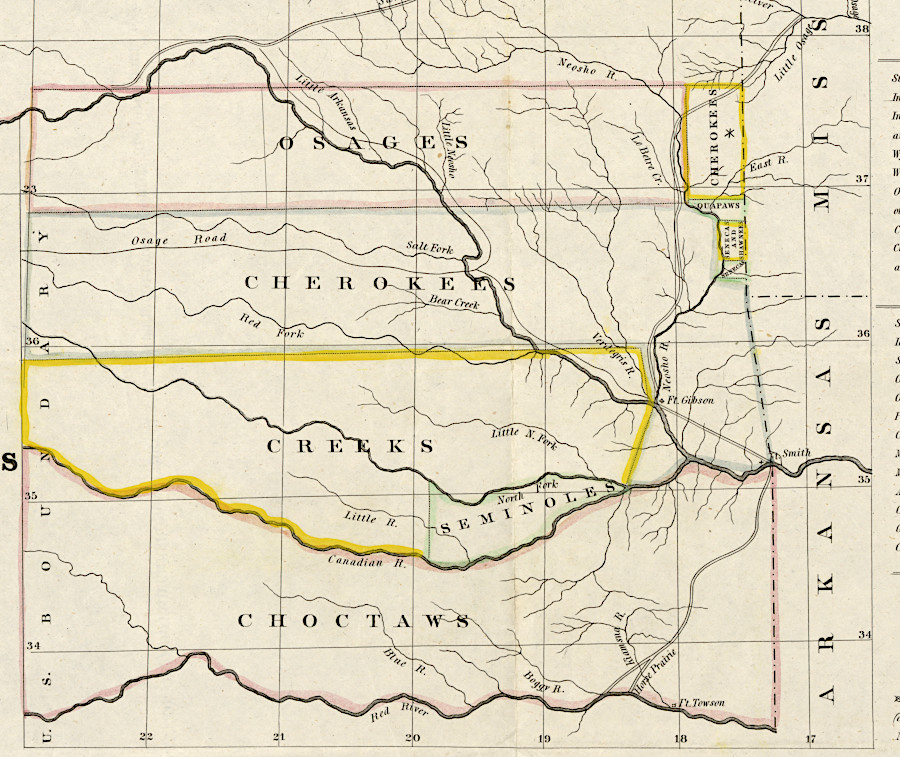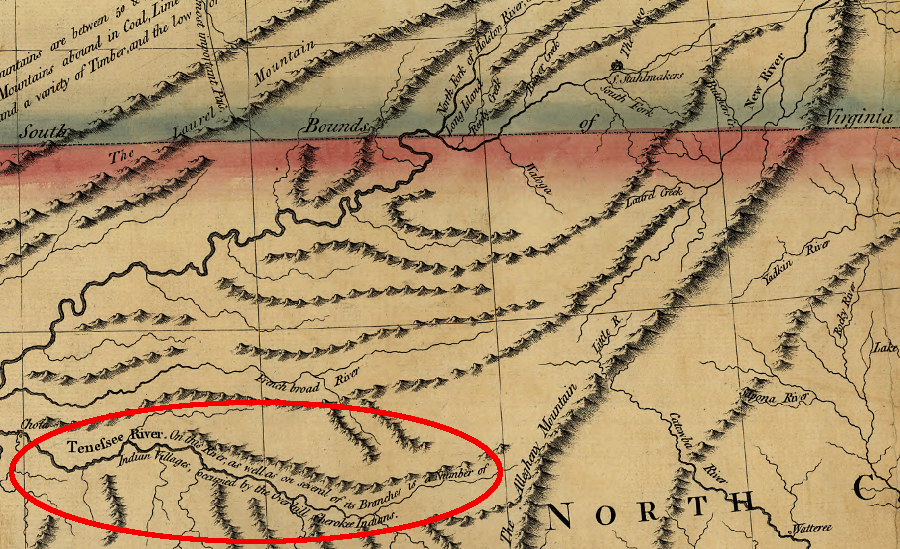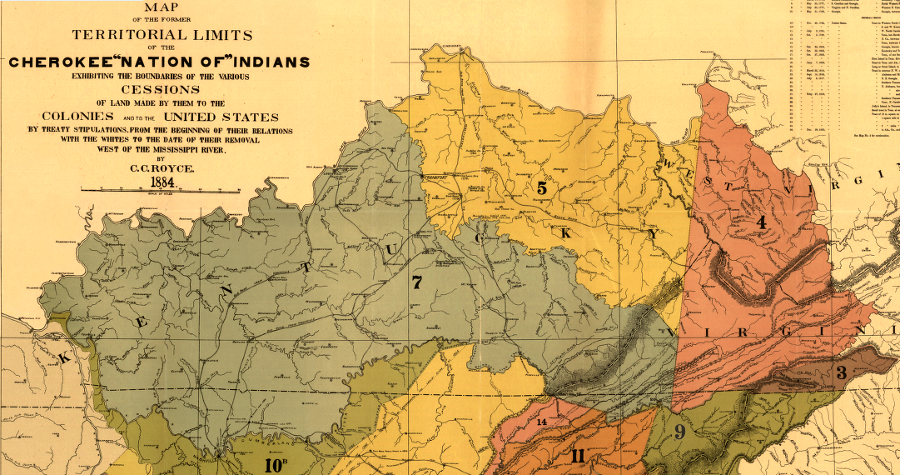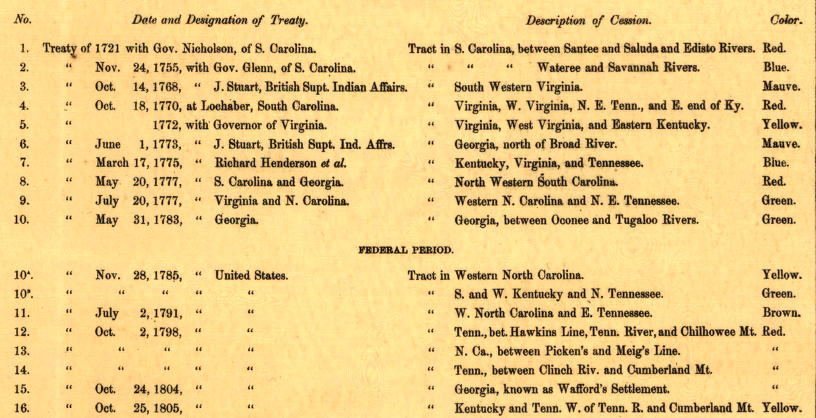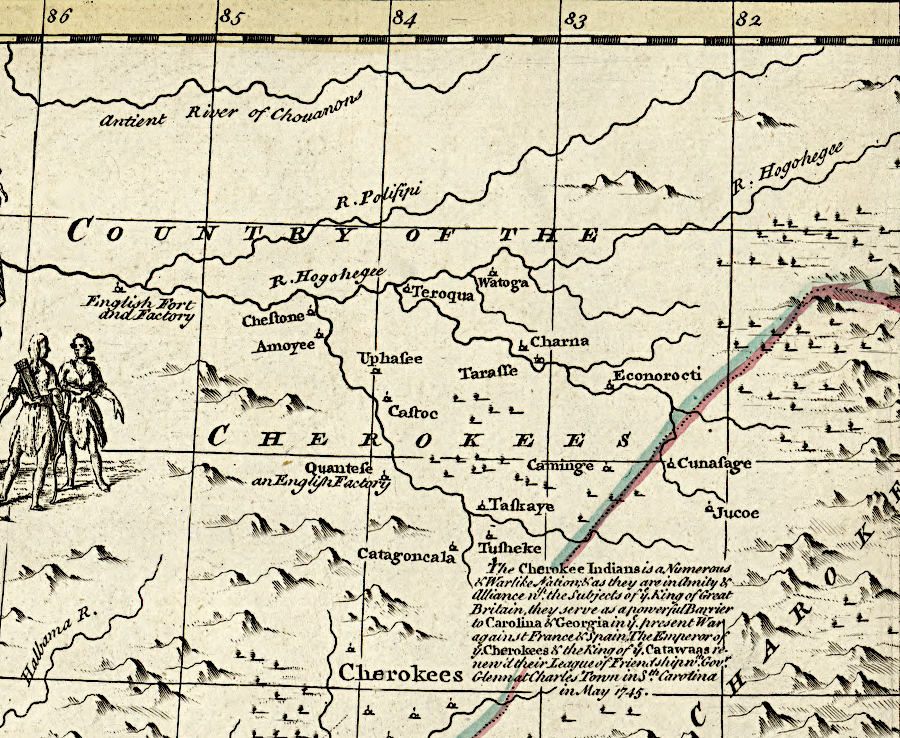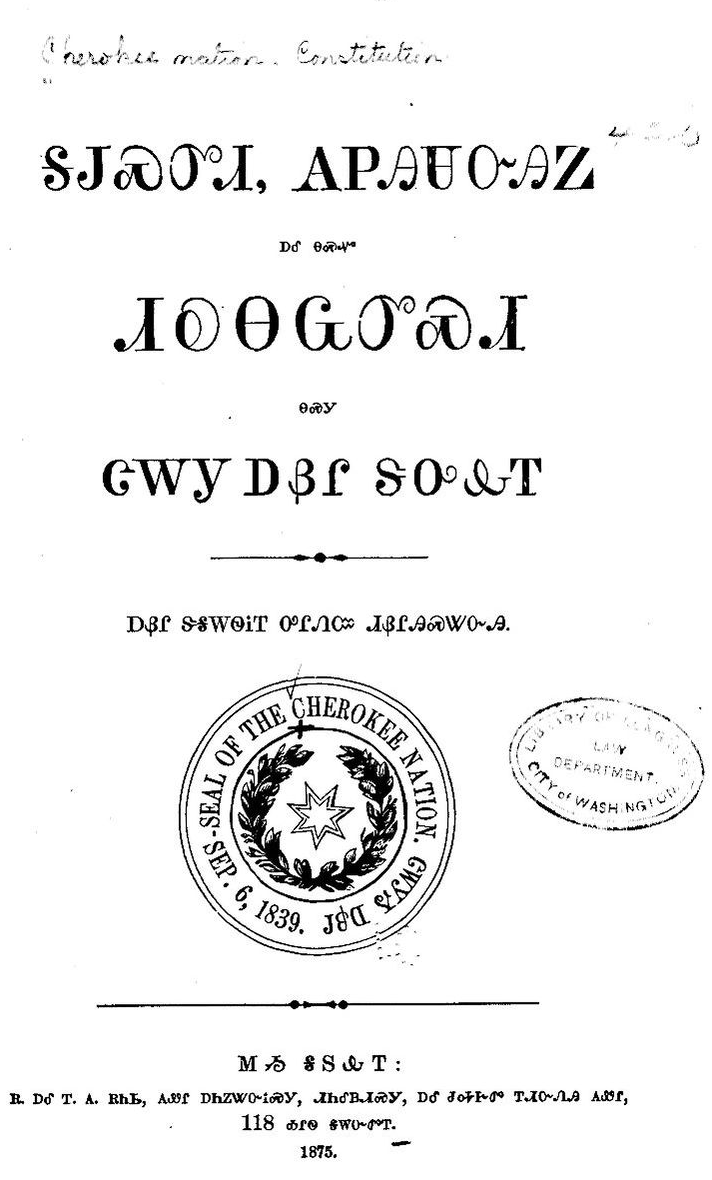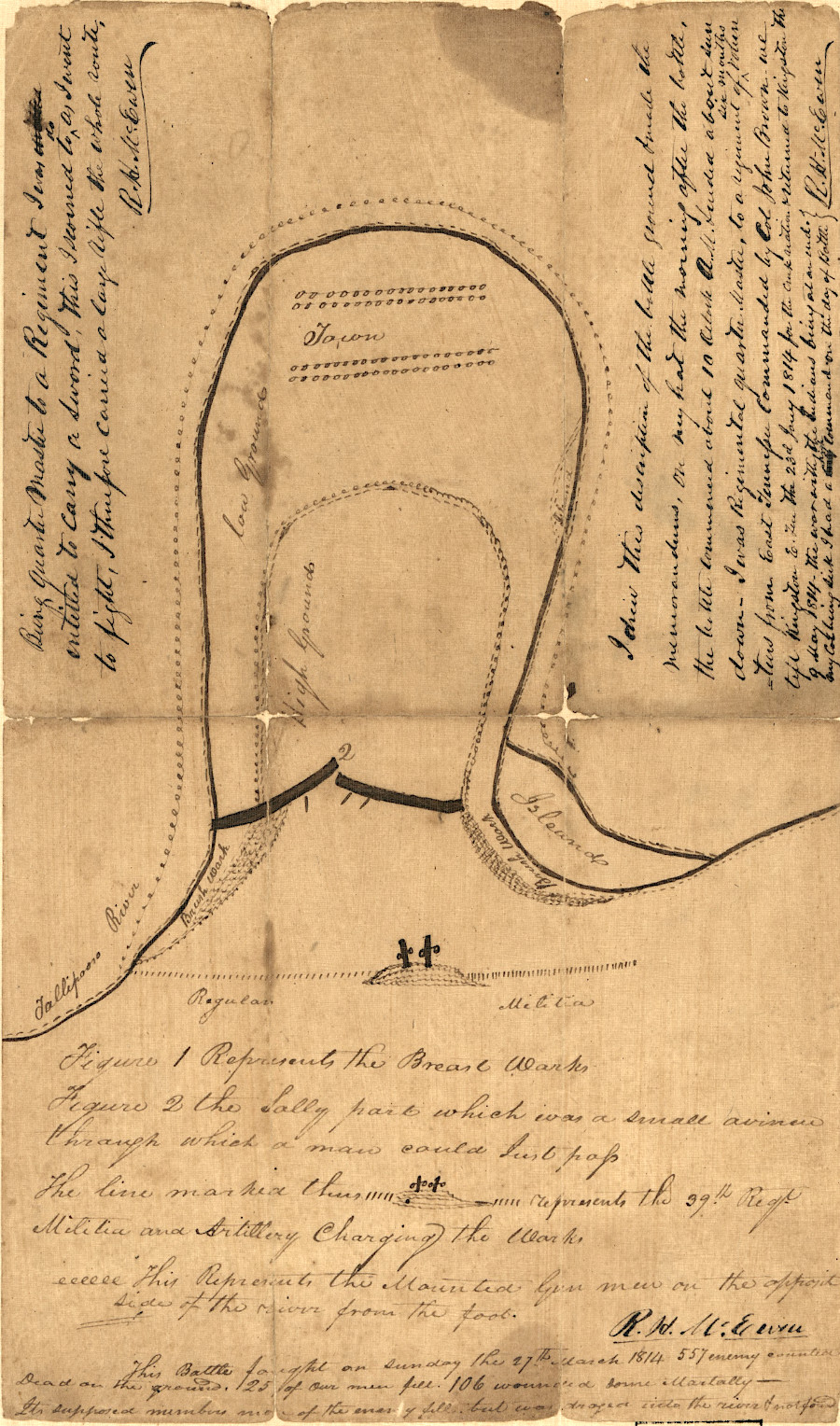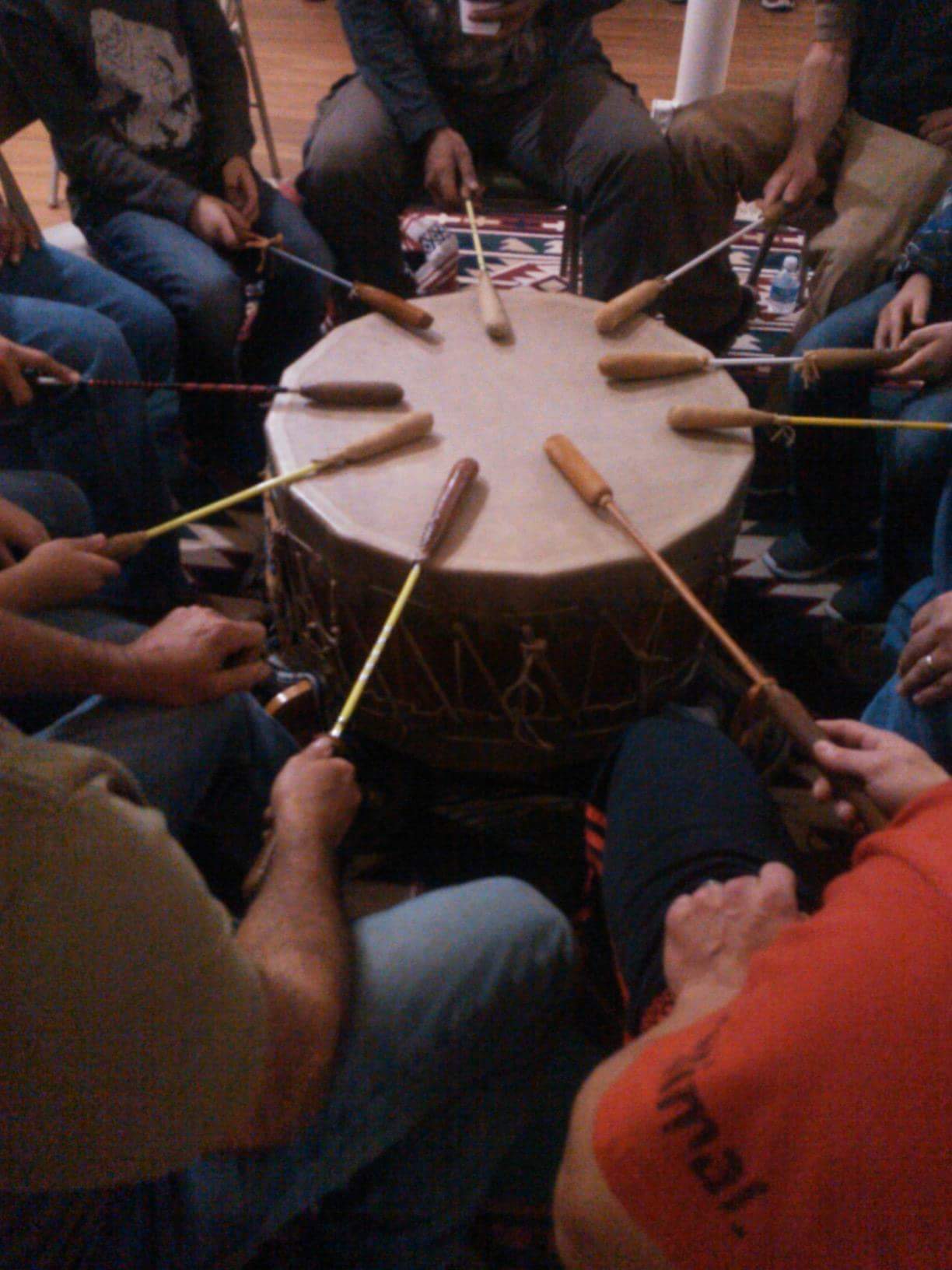The Cherokee Nation and other Indian connections with the Watts Family Foundation is documented through the European Colonial Settlers of the Watts Family for the Sommerset Area of England in Virginia and other colonies during the 1600s, 1700s and 1800s. This is the same family that had interracial realations with African and Native American families. Moreove, this is the same family that the Tidewater, Virginia Watts Family are a part of. During the 1700's this Watts family had marriages with Cherokee Native American Women who produced a mixed blood (European/Native American Cherokee Family Line). Even more in this same line there was found to be also a (Cherokee / Chickasaw European/African/Native American Family Line). Below you will find part of the DAWES ROLLS and below that you will the NATIONAL ARCHIVES CATALOG link. Search the Dawes Rolls, 1898–1914
National Archives Catalog The Cherokee in Virginiahttp://www.virginiaplaces.org/nativeamerican/cherokee.html The Cherokee nation speaks an Iroquoian language. It is related to the languages spoken by the Nottoway, Meherrin, and Tuscarora in Tidewater south of the James River, the Susquehannock at the northern edge of the Chesapeake Bay, and the Mohawk, Onondaga, Oneida, Cayuga, Seneca in New York. The original speakers may have migrated into the Southern Appalachians after the Moundbuilder culture in the Mississippi River faded in the 1300's and 1400's. Moundbuilding societies constructed mounds as gravesites for ceremonial burials, with houses on top for the elite. The Cherokee continued to erect ceremonial houses on top of mounds that had been built earlier. Debris from those houses increased the height of the old mounds, but the Cherokee culture was not centered on the construction of *new* mounds. Moundbuilding in Virginia was concentrated west of the Blue Ridge, except near the headwaters of the Rivanna River. One mound built along the Rivanna River east of the Blue Ridge was excavated by Thomas Jefferson. Reports of Native Americans visiting the mounds When the English arrived in Virginia, the Cherokee lived in the upper Tennessee River tributaries of what later became Virginia. In the Carolinas and Georgia, there were Cherokee towns along the Savannah, Chattahoochee, Hiwassee, Little Tennessee, and Tennessee rivers. In later negotiations with colonial officials, the Cherokee claimed control over lands in Kentucky extending north to the Ohio River. They may have hunted through the bluegrass valleys in the Kentucky and Cumberland River watersheds, crossing through the mountains at Cumberland Gap long before English explorers "discovered" it, but the Cherokee had few if any towns west of the Allegheny Front. The disruption of the old culture and the development of new polities in the Southeastern US may have been affected by the 1540 expedition of Hernando de Soto through the Tennessee River watershed. The arrival of the unexpected Spaniards, with technology and beliefs far different from the Moundbuilders and the power to threaten the existing hierarchy of control, could have diminished the authority of religious leaders in particular. New diseases brought by de Soto and his herds of pigs may have helped to alter the alignments of different communities living along the mountain streams. Because there were no Cherokee communities on the Atlantic Coast when Spanish colonists first began settling there in 1526, followed by French and English colonists, other Native American tribes discovered first that the colonists were willing to trade iron tools, guns, and textiles. In exchange, the Native Americans offered food,deer hides, and other Native Americans to be enslaved. The colonist-provided manufactured goods substantially improved the quality of life for people previously limited to stone/bone tools, and to production of clothing that required great amounts of time and effort. The English, like the Spanish, were disappointed to learn there were no accumulated hoards of gold and silver to steal, but the traders found opportunities to acquire slaves and animal skins. The coastal tribes traded European goods with inland tribes for the desired furs, and the coastal tribes acquired slaves as well for trade. Initially, the Cherokee obtained trade goods though intermediary tribes and not through direct trade. After traders based in Charles Town started direct trade with the Cherokee, they classified the Cherokee towns by location. The Lower Towns were in the Savannah River headwaters. The Middle, Valley, and Out towns were in the Blue Ridge along the Tuckasegee, Little Tennessee River, and Hiwasee rivers. The Overhill Towns were further down the Little Tennessee River. Other Cherokee communities stretched north up the Tennessee and Holston Rivers into what is now Virginia. Towns were independent of each other; there was no paramount chief. Warriors regularly assembled from multiple towns to raid the Creek and Choctaw to the south, Chickasaw to the west, Sara to the east, and Shawnee and Iroquois to the north. Several warrior paths developed as Shawnee and Iroquois returned to attack Cherokee towns. Siouan-speaking occupants of towns in the valleys west of the Blue Ridge, perhaps related to the Tutelo and Saponi, moved away to avoid the warring bands. The valleys were depopulated before the English, Scotch-Irish, and German immigrants arrived in the 1700's. In 1673, Abraham Wood sent James Needham and Gabriel Arthur from Fort Henry and the first traders from Virginia reached the Overhill Town of Chota. Gabriel Arthur survived the trip and captivity, finally returning several years later with some Cherokee. In 1690, Cornelius Dougherty came from Virginia and stayed with the Cherokee as a trader. Ultimately traders adopted the Occaneechi Path to link the English in Virginia with various Cherokee towns in the Tennessee River watershed. The Catawba map, marked on deerskins and provided to Gov. Francis Nicholson of South Carolina around 1721, suggests the Cherokee traded directly with Charles Town and with few intermediaries on the route to Virginia.1 Historic Tourism Related to Native AmericansNative American Tribes in Virginia Since ContactThe Quest of the Appalachian Cherokee Nation for State Recognition
Links
References1. "Celebrating Native American Cartography: The Catawba Deerskin Map," Library of Congress, November 30, 2016, https://blogs.loc.gov/maps/2016/11/celebrating-native-american-cartography-the-catawba-deerskin-map/ (last checked July 8, 2017)
Exploring Land, Settling Frontiers Virginia Places A RACE OR A NATION? CHEROKEE NATIONAL IDENTITY AND THE STATUS OF FREEDMEN'S DESCENDANTS . Alan Ray* A Race or a Nation_ Cherokee National Identity and the Status of.pdf
|
Descendants of Trader/Interpreter John Watts
Compiled on March 28, 2002 by:Ginny MangumContact at vscissorlady@aol.com
Research is still being conducted on John Watts who was born about 1720's in, some researchers say Scotland, some say Bowling Green, VA. We know that he died between October 20, 1770 and March 4, 1771. He worked October 13 - 20, 1770 for a meeting between principal Cherokee Chiefs and John Stuart about a boundary line with Virginia. (Gage Papers #5317 137:10). In a letter dated April 29, 1771 from Alexander Cameron to John Stuart about a March 4, 1771 meeting, it mentioned that John Watts was deceased!! (Gage Papers #5295 102).
John Watts was first hired by Christian Quest, grandfather of Sequoia, to work for the Virginia Land Company. He was known as a Virginia Trader; they worked out of Charleston, S.C. Researcher Robert D. Epps (see Watts Genforum Message Board, #2001, http://genforum.genealogy.com/watts), says “In 1754 a John Watts married a Joppe Stuart in Charleston, S.C. John and Charles Stuart were British Indian agents into the Cherokee Nation. John Watts worked as an interpreter for them. Most likely there is a Town Family, as well as the Native American Family.” Could this be true???
John Watts entered the original Cherokee county about the middle of the 18th century (prior to 1750). As an interpreter, he accompanied Ammonscossitte, Young Emperor of the Cherokees, on a trip from Tellico in Tennessee to Williamsburg, Virginia in 1752. (See, “The CHEROKEE FRONTIER: CONFLICT AND SURVIVAL”, by David Corkran, page 437). He also served Captain Raymond Demere as interpreter during the building of British Fort Loudon in 1756-1757. During this time, he was accused of stirring up trouble between the Cherokees and the white settlers. In a letter from Littleton to Demere, Littleton says, “I’m well convinced that this talk proceeded from something that was told the Indians by John Elliot and John Watts. Watts speaks their language well. Elliott and Watts are a couple of dangerous people.” (Old Frontiers by J. P. Brown).
As stated in “Diplomacy and the Indian Gifts” by Wilbur Jacobs, John Watts was in New York December 2 - 17, 1755 with Thomas Pownall, Olivery Delancy, Goldbrow Banyar, Daniel Claus and Peter Wraxall to plan the downfall of Sir William Shirle. One of John’s sons, Garrett Watts, was born on January 8, 1756 in Caroline County, VA. It doesn’t seem possible that John would have made it back for the birthing. (As noted by Betty Watts, whose husband Noel E. Watts is a 4th great grandson of Garrett.)
From the book, “John Stuart and the Southern Colonial Frontier”, by John Richard Alden, we find that in 1757, John Watts was a supervisor of parties of Cherokees and Catawabas coming into Virginia, along with Richard Smith and Thomas Rutherford, all of whom were given the titles of “Conductors and Guides”. The book also mentions that in 1761, John Watts escorted Tistoe of Keowee, and Slavecatcher of Tomotley back to Ouconnostotah. John at the time was Captain in the Provincial Rangers.
In 1763, John Watts acted as interpreter at the treaty of Augusta, as mentioned in “Tennesse during the Revolutionary War”, by Samuel Cole Williams. In 1767, John Watts accompanied Attokullalulla and Ouconnastotoah and their children, as mentor and interpreter, to Charleston. Stuart permitted only eight persons to go.
See “Who Was Among the Southern Indians, a Genealogical Notebook”, 1698-1907, by Don Martini: Page 691: Watts, John - Cherokee Trader, lived at Ninety-Six, South Carolina in 1751. He was a British interpreter for the Cherokees at Fort Loudoun (S.C.) in 1758 and at Augusta in 1763, and continued to fill that position at the 1770 treaty negotiations. He died early in 1771, and was replaced by John Vann. Married to a sister of Doublehead, he was the father of Chief John Watts.
There is a lot of speculation as to the actual wife of John Watts. Some say she is the daughter of Chief Atakullakulla and some say she is the daughter of Chief Great Eagle. J. P. Brown, in his book “Old Frontiers”, says that John Watts married the sister of Chiefs Old Tassel, Doublehead, and Pumpkin Boy. Their other sister was Wurteh (mother of Sequoah). I have seen her name as: Xaiyantshee, Onitositah, Kay-i-o, GHI-GO-NE-II, etc. Research will continue.
I have nine children listed on my Descendants List for John and his wife (as taken from various sources). They are noted as #2 and their children are noted as #3.
The following quotation from a petition by Garret Watts (son of John) for a Revolutionary War Pension was posted on the Watts Genforum Board (http://genforum.genealogy.com/watts), message #929:
“I was born on the 08 day of January, 1756 in Caroline County in Virginia. At the age of 12, moved to North Carolina where I entered the service of the U.S. My age is recorded in my father’s bible which is in possession of some of his descendants I know not. When I was first called, I lived in Casswell County, North Carolina. After the war, I moved to Jefferson City, Georgia, then to Perry City in the State of Alabama where I now live.”
CHIEF JOHN WATTS:
FROM "WHO WAS WHO AMONG THE SOUTHERN INDIANS, A GENEALOGICAL NOTEBOOK", 1698-1907 by Don Martini: Watts, John - Cherokee Chief, was born in 1753, the son of Trader John Watts. Also known as Kettiegesta, he was for many years a leading chief of the warlike Chickamauga faction of Cherokees that waged war on the American Frontier. He fought against John Sevier at Boyd's Creek in 1780. Two years later, he served as a guide for Sevier, but he led the General's troops from the Chickamauga towns. In May, 1792, he was described as a "bold, sensible, and friendly half breed" and as a "stout, bold and enterprising man". Despite all the compliments by the Americans, he continued to wage war on the frontier. He was severely wounded in a raid on Buchanan's Station, near Nashville, on September 30, 1792. While recuperating, he met with Governor William Blount of the Southwest Territory at Henry's Station, near Long Island on the Holston, in April, 1793. After his daughter was killed by whites on June 16, 1793, he again went on the warpath. In September, 1793, he, Doublehead, and James Vann led 1000 warriors toward Knoxville, only to abort the raid. He is said to have joined Chief Bowl and others in the attack on whites at Muscle Shoals in June, 1794. In November, 1794, following Major James Ore's successful invasion of the Chickamauga towns, Watts and other Cherokees sued for peace. In December 1796, he visited President Washington in Philadelphia, and in October, 1800, he met with Moravian missionaries at Spring Place. He signed the treaty of 1805. Once described as the greatest ballplayer in the Cherokee Nation, he died either on the Mississippi River about 1805 or at Willstown (AL), with burial there. He was a brother to Unacata and to a Cherokee killed at Boyd's Creek, and was the father of John Watts, Big Rattlinggourd, and perhaps Hard Mush (Gatunuali).
From page 353 of Old Frontiers, by J. P. Brown: “Chief John Watts was described by Governor Blount as “unquestionably the leading man in his Nation.” He possessed a talent for making friends, red and white. William Martin, son of General Joseph Martin, said of him, “He was one of the finest looking men I ever saw, large of stature, bold and magnanimous, a great friend of my father’s.” Major G. W. Sevier states: “He was a noble looking Indian, always considered a generous and honorable enemy,” and other pioneers paid high tribute to his “engaging personality.”
It is said that Chief John was married at least two or three times. I have seen several names that could be his wives but must research this further. See his list of children (as gathered from the Internet) on the Descendant list.
Joseph (note: I have also seen his name as Joseph N.) was born on June 25, 1765 in Burke County, N.C. He married Elizabeth Lydia Ann Cargile of Wilkes County, N.C. on May 12, 1795. Lydia was born in 1775. Per Paula Gibbs Cherokee Watts Newsletter, dated April 11, 2000, Joseph and his family operated a Ferry in Turkey Cove in Haywood County/Burke County, N.C. before they moved to Raybun County, GA. They moved to Clayton, Rabun County, GA in 1826 with their 11 children.
Joseph died on 4/14/1874 and Lydia died on 12/12/1853. They are both buried in the Joseph Watts Cemetery in Tiger, Rabun County, GA. Note: this small cemetery is next to the home of Tommy Lovel. Tommy was a friend of my dad’s. They had coffee together every morning at Virginia’s Cafe in Clayton along with several other “buddies” and also were fellow vendors at the Raybun County Flea Market. Several of Joseph’s children and grandchildren are buried there and some of his descendants got together and erected a monument dedicated to Joseph and Lydia.
NOTE: I am doing research with Dorothy Welsh (great great grandaughter of Flora Ann Saphronia Watts) on Watts, Cargile, Gillespie, etc. She sent out this email talking about Joseph's will:
"The will of Joseph Watts, Rabun County, GA, 1847 (and it looks like there is an N. attached to the last name of Watts) says that he bequeathes to his son Pleasant and son-in-law Allen R. Gains each the sum of one dollar this being all my property, money and goods and effects which I wish them or their heirs to have-this because he had already given them property. It mentions Allen R. Gaines as being the husband of Catherine Gaines, formerly Watts. He lists his daughters as Patsy Derrick, Polly Hollifield and Elizabeth Crone. He lists them as deceased and gives to their children their mother's part of the property. (Please keep in mind that these women were deceased in 1847). Joseph then gives son Charles Watts the deed to some land. He wants his wife Lydia (Cargile) and son Charles to be the gardians of the children of the deceased daughters (at least that is what it looked like with special attention to granddaughter and ward Elizabeth Derrick). Son John was to be the executor of the will. He lists other sons as John Watts, William Watts, James Watts, and sons-in-law as James Crone, Robert White, John Derrick, Daniel Holifield and Jacob Crone. He signed the will JOSEPH WATTS, not John Watts or John Joseph Watts."
The following affidavit of Joseph’s daughter, Catherine Elizabeth Watts Gains, proves that Joseph was the son of Chief John Watts:
AFFIDAVIT OF CATHERINE R. WATTS GAINS
RABUN COUNTY
Personally appeared before me, L. C. Hollifield, Clerk of the Superior Court in and for the aforesaid County and State, Catherine Gains, formerly Watts, A Cherokee Indian by blood and descent, who resides in the County and State aforesaid, aged about 82 years, states on oath that she was well acquainted in his lifetime with Joseph Watts, the acknowledged son of old John Watts, who was one of the assigners of the Third Treaty made with the government of the United States and the Cherokee people, October 25th, day 1805, at Telico old Cherokee Nation and heard him talk both languages Cherokee and English, and knew him to be a Cherokee Indian by blood, and further states that old Thomas Watts, the brother of the afordsaid John Watts, and know that he was the uncle of the aforesaid Joseph Watts, which were all Cherokee Indian by blood and descent; also states that Thomas Watts, the uncle of Joseph Watts did live in the Cherokee Nation west, and died on the Illinois River about ten miles south of Tahlequah, the capital of the Cherokee Nation Indian Territory, who was a recognized citizen of that Nation and also that Polly Terrial, formerly Watts, is the daughter of the aforesaid Thomas Watts, and the aforesaid Polly Terrial now lives in the Town of Tahlequah, Cherokee Nation, Indian Territory. The wife of Arch Campbell was a Watts, a sister of the aforesaid John Watts, and also of the aforesaid Thomas Watts, and the wife of Arch Campbell is the Aunt of the aforesaid John Watts; that they were all of the same family relations to each other, and all the Cherokee Indians by blood and descent; that the aforesaid Sul Le tesky Watts was one of the assigners of the Cherokee Constitution, and also the Cherokee name of Joseph Watts was Ches-too-lee and further states that Malachi Watts is a full brother to the aforesaid John Watts, and all of them and their descendants are Cherokees by blood and descent, that J. E. Chastain, formerly Watts, is the lawful wife of R. Chastain; that they were married May the 14th, day, 1850, in the state of Georgia, Gordon County and also states that Mary Elvira "Polly" Watts, wife of Pleasant, son of John Joseph, Polly or Mary Watts is the mother of J.E. Chastain, formerly Watts, the claimant for Cherokee citizenship; that her and her descendants are all Cherokee Indians by blood and descent.
Catherine Gains her x mark
Subscribed and sworn to on this 18th day of Nov. 1885., L. C. Hollifield, Clerk Superior Court for said County and State: I hereby certify that the above is true as it stands stated given under my hand and seal of office this Nov. 18th, 1885. L.C. Hollifield, C. S. C.
PLEASANT WILLIAM WATTS:
Pleasant was born November 1, 1796 in Buncombe County, N.C. He died March 18, 1857 in Fairmount, Gordon County, GA. He married Mary (Polly) Elvira Gillespie on October 21, 1821 in Burk County, N.C. Mary was born May 23, 1805 in McDowell County, N.C. and died Feburary 4, 1884 in Fairmount, Gordon County, GA. Both Pleasant and Mary are buried in the Watts Family Cemetery on the Hendrix Farm in Gordon County, GA along with several of their children and grandchildren.
From SKETCHES OF RAYBUN COUNTY by Andrew Jackson Ritchie, copyright 1948 by Andrew J. Ritchey. Page 218 - The Watts Family:
"While it must remain forever to the credit of the one frontiersman John Watts (Pleasant's brother) for planting the Watts family in this country, the most interesting character of the name was Pleasant Watts. He came into the county from Buncombe County, N.C. He seems to have had some money and to have been a speculator in land transactions. As early as 1823 he purchased from George W. Crawford of Haywood County, North Carolina, part of lot 148 in the Valley district, containing 133 acres for $300. In 1824 he bought lot 145 in the Valley, paying $125 for the 250 acres. In 1828 he purchased lot 134 in the same district, containing 250 acres for $600.00.
"All of the land purchases above mentioned were in the Valley and are examples of other purchases in that district. In 1825 he sold part of lot 148 for $300.00. In 1828 he sold part of lot 124 on the east side of the Tennessee River to William Gillespie (his brother-in-law). In 1834 he sold part of lot 121, containing 120 acres, to my grandfather, Eli Ritchie, for $100.00. In 1837 he sold lot 134 on the west side of the Tennessee River to Jesse Carter for $600.00. In 1837 he sold lot 145 in the eastern side of the Valley to Mason Grist for $600.00.
"The foregoing land purchases and sales make up about all that appears in the records of the county about this early settler. No records have been found that show that he left any descendents in the county. His activities covered a period of about 15 years.
"One of the stories about Pleasant Watts that is remembered by a few of the oldest citizens is that he really had a good deal of money for that day and time and kept it in coin and in a strong chest which he kept under lock and key. As the story goes, he would make the offer that any man who could pick up the chest and set it on a wagon could have the money. But the money was so heavy and there was so much of it that no man could win the bet.
"Like a few other pioneer settlers, such as General Andrew Miller who had some ready money, Pleasant Watts, seeing that the Cherokee Indians were being moved out of all the territory in north Georgia, and seeing that in the new lands being opened up there was a greater field for his activities, moved to Gordon County and settled in the neighborhood of where the prosperous town of Fairmount is now. It is said that he became there a man of considerable wealth."
See the Pedigree List for the names of Pleasant and Mary’s children. Below is information on some of their children:
MILTON PLEASANT WATTSMilton was born June 14, 1832 in Clayton, Rabun County, GA. He died on September 13, 1903 in Fairmount, Gordon County, GA. On September 15, 1859 he married Lydia Jane McCall. Milton and Lydia are buried in the Stanton Cemetery on Orr Mill Rd. in Fairmount, Gordon County, GA.
Milton served in Smith’s Legion, 65th Regiment, Co D, GA Volunteer Infantry, Army of Tennessee, from 1861 to 1865. Milton was a Sergeant, and fought in all major battles in Georgia, except Chickamauga. (From Vol. 16 of “Roster of Confederate Soldiers”. Milton is not mentioned in the grey covered Roster of “Confederate Soldiers of Georgia.”
Story by daugher-in-law Effie Watts: It is said that Milton hid in the James L. Mayson school house in Fulton County, GA to avoid capture by the Yankees. It was also said that his home near Ranger, GA was used as Yankee Headquarters, and where they cut up meat to cook, the blood stains could never be removed from the floor. In the closing months of the war, Lydia took their newborn baby and drove in a carriage alone, to her parents home in North Carolina.
Martin Van Buren Watts:
From HISTORY OF GORDON COUNTY, by Lulie Pitts, 1933, page 459:
"Pleasant Watts and Mary Gillespie Watts, parents of Martin Van Buren Watts, came to Georgia from N.C. shortly before their son was born on June 25, 1834. He was a useful, honored citizen of Fairmount district until his death, April 12, 1903.
"He was a prominent Mason, a large landholder, a man of remarkable memory. He was Justice of the Peace for a number of years and county commissioner for 18 years, holding this office during the building of the present Gordon County Courthouse (re:1933).
In 1860, he married Miss Josephine Robertson, daughter of Matthew and Rebecca (Sparks) Robertson. She was born July 29, 1839 and died July 21, 1913.
Sylvester Rockwell Watts:
From HISTORY OF GORDON COUNTY, GA, by Lulie Pitts, 1933: page 452:
"Celia E. Stanton and Sylvestor R. Watts were married Feb. 19, 1866. They resided for a time with his mother at the family home, four miles from Fairmount, Gordon County, GA, then occupied their own farm near Fairmount and in 1881, moved to Salacoa, Cherokee County, GA. From early boyhood, Mr. Watts had been an active , devoted member of the Methodist Church. His death took place March 13, 1883. Mrs. Watts died in Albermarle, N.C., October 6, 1923.”COLUMBUS FIDELPHIA CRAYTON WATTS
Columbus was born November 4, 1827 in Clayton, Rabun County, GA. He died on December 25, 1909 after a lengthly illness in Jasper, Pickens County, Georgia. He is buried in the Jasper Cemetery next to his daughter Leola Watts Hayes and her husband and son. Columbus Watts was married three times. His first wife was Sarah Ann Minerva Hopper. Sarah was born May 13, 1828 and died May 14, 1857. She is buried in the Hopper Family Cemetery in Ranger, Gordon County GA. Children of Sarah and Columbus are: William H. Watts, his twin brother Pleasant Marvin Watts, Sarah Ann Minerva Watts. Sarah’s twin brother died at birth. Mother Sarah died a few days after giving birth to the last set of twins. Second wife: Catherine Jemima Chastain was born March 25, 1832 and died January 29, 1875. She is buried in the Hopper Family Cemetery in Ranger, Gordon County, GA. Children of this union are: Lauria Pleasia, Wilson Woodrow (Wiltz), Martha Leola, John C., Honey Belle, Cynthia J., and Mary F. The name of the third wife is not known. From a letter from Mary Watts Jordon (grandaughter of Sylvester R. Watts) to Howard Van Watts (grandson of Columbus Watts): "The only thing I could find about your grandfather at Jasper, GA was dates I got from the marker on his grave. I did meet an old resident who knew them quite well. She said he was a very religious man and very often stood up in the pulpit and read from the Bible. It must have been on times when they didn't have a regular preaching service. This wife was his third, she was a widow with children. He and she were a good age when they married. Leola wanted to take him to Fairmount for burial but his wife objected. Then when she was buried, her children placed her beside her first husband, causing some hard feelings between their children and step children." See Descendents List for children of Columbus Watts. Info on some of his children: Wilson Woodrow Watts (Wiltz): W.W. Watts, went to Texas sometime in late 1800's. He was a Methodist Minister who served as a chaplain to Theodore "Teddy" Roosevelt in Cuba. Teddy also asked W.W. Watts to serve as a chaplain in the Panama Canal, but he refused. W. W. Watts was instrumental in helping my grandfather, Howard Van Watts, go into the ministry. In a letter to Mary Watts Jordan, dated 3/18/1959, Howard Van noted the following: "Probably Mrs. Homer (Mary) Warlick will be able to give you information concerning our uncle Wilts W. Watts, who for many years was one of the leading members of Texas Methodism. With five other clergymen, he raised the first million dollars that went into the establishment of Southern Methodist University, located at Dallas, Texas. He and his wife, Lillie, in addition to their own four children, adopted, reared and educated 16 (mostly orphan) children and through the aid of wealthy friends gave aid and assistance to many other poor but worthy young people in securing an education, among them this scribe." NOTE: What is Lillie's maiden name????? THE FOLLOWING INFORMATION WAS GIVEN TO ME BY CHARLES DILL (Father-in-law to Sarah - great granddaugher of W.W. Watts): Name: Wilson Woodrough Watts Sex: M Title: Rev. Birth: 14 NOV 1861 in Fairmount, Gordon Co., GA Death: 1929 in Thomasville, GA Occupation: Methodist Minister Note: TEXAS ANNUAL CONFERENCE 57 REV. W. W. WATTS. On Friday morning, August 2, at 10 :00 o'clock at Thomasville, Georgia, the Master called Rev. W. W. Watts and said unto him, "Well done, thou good and faithful servant," and Brother Watts was ready and able to respond to the call, "I have fought a good fight, I have finished my course, I have kept the faith." Endowed with a great mind, a great heart, and a strong body, Brother Watts rendered a monumental service to the Kingdom of God. He lived as completely for others as any man it has been my privilege to know. Three sons and one daughter have received the benefit of his council and his guiding hand. But his heart was so enlarged that he went out to take in others and twelve children, not his own, were taken into his heart and home and trained for useful service in the world. Some said, "Brother Watts kept himself poor taking in children and educating them and training them." Perhaps he did, but think of the dividends he was piling up in Heaven. Years ago he took into his home a little girl named Martha, she grew to womanhood in the parsonage and was married in the parsonage in Orange, Texas, while Brother Watts was Pastor there, and went to make her home in Georgia. Into her home Brother Watts came Thursday afternoon, August 1, a tired, sick man, And in this home he died the next morning and heard the Master say: "Verily, I say unto you, inasmuch as ye have done it unto one of the least of these, ye have done it unto Me, enter thou into the joy of thy Lord." W. W. Watts was born at Fairmount, Georgia, November 14, 1861. He was converted and united with the Methodist Episcopal Church, South, in early childhood. In 1891 he united with the East Texas Conference and was assigned to the Garrison Circuit. Then to Orange Station, First Church Beaumont, Chaplain in the U. S. Army for the 1st Texas Regiment during the Spanish-American war. Then to Nacogdoches Station, Marlin Station, Jacksonville Station, Houston Tabernacle Church, Pittsburg Station, Orange Station, Presiding Elder Beaumont District and in 1923 he became Conference Missionary Secretary, serving faithfully until the day of his death. For thirty-eight years he was a faithful Methodist preacher, pastor, Chaplain, presiding elder, and for six years, Missionary Secretary. Through all of these years he was loyal, devoted and steadfast. He was a church builder and his work abides throughout this great Conference. Under his pastorate the splendid church at Jacksonville was erected and during his pastorate at Orange our present beautiful building was launched and completed while he was Presiding Elder of the district. THOMAS S. BARCUS. Excerpted from the minutes of the Texas Annual Methodist Conference (1861) - From the Watts Family records maintained by Gina Beth Watts Hendrick, Bryan, TX Research Report on W.W.Watts From: Bill B. Hedges, Research Historian, Texas Annual Conf. UMC P.O. Box 335, Wills Point, Tex. 75169 To: Gena B. Hendrick. 813 Rio Grande Ln., Bryan, Tx 77801 Date: 10/28/96 Records show that W. W. Watts was born in 1861 in Fairmont, Georgia and died in 1929 in Thomasville, Ga. His memorial, published in the 1929 Journal of the Texas Annual Conference, page 57, reports the follow1ng: He was converted and joined the Methodist Episcopal Church, South, early in his childhood. He and h1s wife had three sons and 1 daughter. Took in twelve other children to rear. He died 1n Georgia at the home of a foster daughter, Martha. He was a church builder and built in Jacksonville, Tex. and in Orange, Texas. He entered the East Texas Conference in 1891 "on tria1" and was ordained deacon in 1891 as a lay pastor; he was ordained an elder in 1896 and was received into full connection with the Conference in 1893. His appointments to churches were as follows: 1892 Marshall mission 1893 Garrison 1894-95 Orange 1896-98 First Church, Beaumont 1889 Chaplain, First Texas Reginent 1900 Longview Station 1901-04 Nacogdoches Station 1905-06 Marlin 1907-09 Jacksonville Station 1910-11 Houston: Tabernacle 1912-13 Pittsburg Station 1914-19 Orange Station 1920-23 Presiding Elder, Beaumont Distr1ct 1934-29 No report given: could assume that he retired and that fact was not noted in the Journal. For several years he served as the Conference Missionary Secretary along with his pastoral duties. This concludes the information we have from the Journals. Should I find more I will send it to you. Cordially, Bill B. Hedges Copied from the Family Records maintained by Gena B. Watts Hendrick, Bryan, TX The following letter from W.W. to his wife Lillie was given to me by Charles Dill. See a picture of W.W. on the website. (Taken in uniform while he was a Chaplain in Spanish American War): Letter from Wilson Woodrow Watts (WW) to his wife. Note: This letter was written during the Spanish-American War when W.W. was 37 years old. He served as a Chaplain during this time. I am translating this letter and for words I cannot decipher I will put a question mark. Near Mobile, Ala. June 19, 1898 Mrs. W. W. Watts Beaumont, Texas My Dear Wife: This has been a very busy Sabbath to me. I preached this morning and have put in a greater part of the day visiting the sick in the Hospital and seeing the men in their quarters. The work has been a perpetual delight, as I am feeling well and hearty. This field it seems to me grows riper as the days go by. I have never seen a more approachable set of men. You appear to be uneasy about the heat making me sick. The heat is not very much, if any, greater than at Beaumont. I am in the very finest of health. In fact, never felt better in all my life. If I could know at the close of each day that my loved ones were well, sweet sleep would claim me with each closing day. I dreamed last night that I was with my family again. Everything was so perfectly natural. Someday, this duty performed, I will lodge again within the sanctity of my own home circle. It is a fact that I have only had one small attack of blues and that for only a few minutes since I came here. The occasion was when Mrs. Sexton and her boy called at my tent one day. I fight against blues, as I would be worthless and sick sure enough if I should allow myself to weaken. So I try always to be buoyant. Many of these poor fellows are in the hospital from no other reason than that they want to go home. I try to comfort them all I can. Some of them break down and cry like sure enough children. I am so glad to be able to help them. Many of them beg me to procure a discharge for them. I wish I could send these mothers sons home. It rained this p.m. and made things rather damp around my tent. I will send you some camp scenes soon. Had one made with all my “whole self” sitting in front of my tent. No, I have heard nothing from Brother Stubblefield. I am expecting to hear each day. Send me his last letter to you. I am of the opinion that he is away from home. If I do not hear from him in a day or so, I will write again. Prepare the girls as far as possible for the move. I hope you will get the ladies to agree heartily in the plans we have suggested relating to Mollie. It is certainly nice in Sister Chester to still claim me as her pastor. I am pleased to be remembered thus and know you enjoyed the stay at her home - she is from Ga, “A hem”! When she carries you to ride, drive around one block for me. I had an invitation to preach 1st Church of Mobile today. A good dinner was also offered as an inducement but I withstood all the “camp grub” and stuck to my work. As bedtime comes on, I am busy lining (?) off this letter to you. No more pleasant task has been performed doing this. You asked me to write you a “real love letter”. Now, you know I never did learn how that was done. You tried to get me to write something of that sort before we were married and you failed because I didn’t know how. I always write in a natural way. Maybe sometimes I am in a more lucid mood than at other times. Nevertheless, I will do my best to make all my letters palatable. It did me good to know the children remember me in their prayers. God bless them. No man ever had better children. They will make their mark yet. It would pain me keenly to think they forget me at any time. You are all fresh in my memory. I wish you would send me some photos. Send the old ones if you have no new ones. I gave Col. Openheimer your message. He seemed pleased to hear from you. Col. has been unwell for some days. I think he is a little homesick. When you go to Sabine Pass, remember me kindly to all my friends there. Be sure to go see Dr. Perkins. He is, I believe, my friend. Tell me how the Church affairs move on. Don’t forget to tell Mrs. McDonough that I have not forgotten her. I think I will write Uncle Charlie, Aunt Joe, and Grandma soon. Since I write for the papers, I have had to leave off some letter writing I would otherwise like to do. I write Pa every two or three days and try to write you a letter each day. I wrote more than fifty letters last week. Rastus is waiting on our table now. I find him very handy. He washes all my rough clothes and does not make a bad ? of it. We have no smoothing irons but the difference is not perceptible after a few hours. I care but little for this experience. The wisest men here think the war will be over shortly. I do not know I am sure. I won’t no cessation of hostilities till the matter is settled correctly. I am more than willing to do my part in settling the matter in favor of humanity. If we are sent to the front, I rather think we will go to Porto Rico. This is a warm but healthy climate. I am not fretting myself where we are heading. I had a long letter from Mary a few days ago. She said no one had gone from that section to the war. These Eastern states seem to be having some difficulty filling their quota of troops. Mary says she has not fully recovered from the attack of fever last year. She talks of the time when I “saved her life”. Poor girl - she has a cup full to the brim of things bitter indeed. I wish I could help her. Says her lower limbs do not respond fully. Lela is at home again but will begin teaching soon. John was busy with his crop. I wrote him but have not heard from him directly. All the camp is wrapped in slumber. I must close now and write Pa. He wants me to write him every few days. I know he is anxious about my going away. Wish you would write him a letter. It would help him no little. He says I always had too much fight in me. He ought to know! Does the milk still flow all the way across the street? Give “Miss Sadie” a carload of love. Tell her to divide with the girls. Tell Sister Caswell I have fond recollections of her. With love & kisses for all I am your husband - W PLEASANT MARVIN WATTS: Not much is known about Pleasant Marvin except that he must have been a very nice man. While owning a retail store he was prone to give too much credit to customers. Because his customers owed him so much money, his business failed. He was born February 17, 1856 in Fairmount, Gordon County, GA and died on August 24, 1932 in Fairmount. On December 18, 1877, he married Willie Ann Mansell in Fairmount. Pleasant Marvin and Willie are buried in the Johnson Cemetery in Fairmount, GA. HOWARD VAN WATTS: Howard Van Watts grew up in Fairmount, Georgia. All his life, Van was an avid reader. He read all of Charles Dickens books before he was 12 years of age. His mother encouraged him to go on to college but his father would have preferred that he stay home and work on the farm. Van went on to attend Martha Berry College in Rome, GA. One of the stories about college that he liked to tell was when Teddy Roosevelt came to visit the school. Van was working in in the laundry room along with another student. Van cautioned the other student to not get too excited - Teddy Roosevelt was after all just another human being. But when Teddy came down to the laundry room, the other student got all flustered and "made a fool" of himself. Van actually wrote the welcome speech for Teddy Roosevelt himself, but another student gave the speech and got the credit for it. Before he moved to Texas in 1910, Van worked briefly in an insurance office. In order to have the money to go to Texas, Van had to sell his surrey and horses. He first went to Texas with the idea of becoming a lawyer but later decided to become a Methodist Minister with the influence of his uncle Wilson W. Watts (Uncle Wiltz). This was appropriate because from an early age, Van would go out to the woods and get up on a stump and practice preaching. Rev. J. Carl Peel wrote the following about the death of Rev. H. V. Watts: "Howard Van Watts was born December 19, 1887, in Fairmount, Georgia. Brother Watts was twice married, to Bessie Louise Avera in 1916, and to Bertha Allen Smith, 1942. He was widowed both times. He was survived by four daughters, Mrs. Mansel Lee Horn of Baton Rouge, La; Mrs. Gladys Reed of Houston, Tx; Mrs. Avera Bell Hansen, of Raytown, Missouri; and Mrs. Pleasant Mangum of Dallas, Tx; Three sons, Claude, John and Ernest Watts of Houston also survived him. Another son, Howard Van Watts, Jr. lost his life in the Normandy invasion in 1944. Twenty grandchildren and five great -grandchildren survived Brother Watts. "When a young man, Brother Watts joined the Methodist Church and answered the call to preach under the ministry of his uncle, Dr. W. W. Watts. He was licensed to preach August 21, 1911 at Alvin, TX. He was received on trial in the Texas Conference November 1912, ordained a deacon November 22, 1914, and an elder June 1916. "Brother Watts' first charge was the Katy circuit, which included the towns of Missouri City, Sugar Land, and Katy. He rode a bicycle to get from point to point on his circuit. His second charge was the Alto circuit, a seven point circuit, which he covered on horseback with his Bible and clothing in one saddlebag and his books in another. He superannuated in June 1954, but actually he never retired, for he was active up to just before his death. After superannuation, Brother Watts moved to a farm at Chapel Hill, Texas and became pastor of the C.H. Cochran and San Felipe Methodist Churches. After the death of Mrs. (Bertha Allen Smith) Watts, he moved to Moody House, Galveston, where he was Chaplain and served as Associate Minister of Moody Memorial United Methodist Church, under Dr. Rabb Willis. "I cannot think of any other minister that had a more effective ministry than my dear friend and brother. During his ministry he started, completed, or built more than ten church buildings. He was an exceptional pastor, and was loved, respected, and honored by all of the people that he served. Each year after Brother Watt's superannuation, a special Watt's day Sunday was held in his honor at Sweeney United Methodist Church. "When I heard of the passing of Brother Watts, I felt a deep loss, for he was more than a brother in the ministry, he was more than a dear friend, he was my father in the ministry. He touched and was responsible for a least three young men entering the ministry - Eugene Jonte, Robert Jonte, and this writer. Brother Watts died on June 5, 1972, and services were held for him at Settigast-Kopf by Rev. J. Carl Peel. A memorial service was held in the Chapel Hill United Methodist Church the following Sunday." The following is a record of H.V. Watt's 42 years spent in the ministry: BIOGRAPHY: Licensed to Preach: Aug. 21, 1911 at Alvin, TX Received on Trial for Ministry: Nov. 1912 Ordained Deacon: Nov. 22, 1914 - Texas Conference Ordained Elder: Nov. 12, 1916 Superannuated: June, 1954 Supply Pastor - Katy, TX Charge: Sept. 1911-Nov. 1912 Alto Circuit: Nov. 1912-1913 Texas City: Nov. 1913-1917 Sourlake: Nov. 1917-1920 Roberts Ave., Beaumont: Nov. 1920-1923 Northside, Houston: Nov. 1923-1927 Burkburnett, North Texas Conference: Nov. 1927-1929 Clarksville, North Texas Conf.: Nov. 1929-1930 Transferred back to Texas Conf.: Nov. 1930 Athens, Texas: Nov. 1930 - 1932 North End, Beaumont: Nov. 1932-1935 Roberts Ave., Beaumont: Nov. 1935-1940 Central Park Houston: Nov. 1940 - 1944 Freeport, Tx: Nov. 1944 - 1946 Daingerfield, Tx: June 1946 - 1947 Teague, TX: June 1947 - 1951 Sweeny, TX: June 1951 - 1954 San Felipe: June 1954 - 1955 Chappell Hill and Cochran: June 1955 - 1958 Moody Memorial Associate Minister/Chaplain, Moody House, Galveston, Tx (while health permitted) As his uncle, W. W. Watts, did before him, Rev. H. V. Watts gave counsel and assistance to many young men entering the ministry. One of them, Rev. J. Carl Peel had this to say to him in a letter dated December 21, 1967: "Well it is Christmas time again and we are thinking of our loved ones and dear friends. And of course I never had a better friend than you nor anyone that helped change the course of my life that I might realize my ambition and calling from God. I will forever and eternally be grateful for what you did for me. I will always feel indebted to a great and wonderful friend and pastor." Van was engaged to another woman at the time he met Miss Bessie Louise Avera, who was the church organist at Sour Lake, Texas. They were married on June 10, 1916 in Texas City, Texas. Van's uncle, W.W. Watts officiated at the wedding. As was related by his daughter, Gladys Reed, before he was married the young ladies in the congregation would try to get his attention and would put pots of flowers around the pulpit. He became agile at stepping over them as he preached, which helped him later in stepping over his children as they were apt to crawl over the pulpit.
